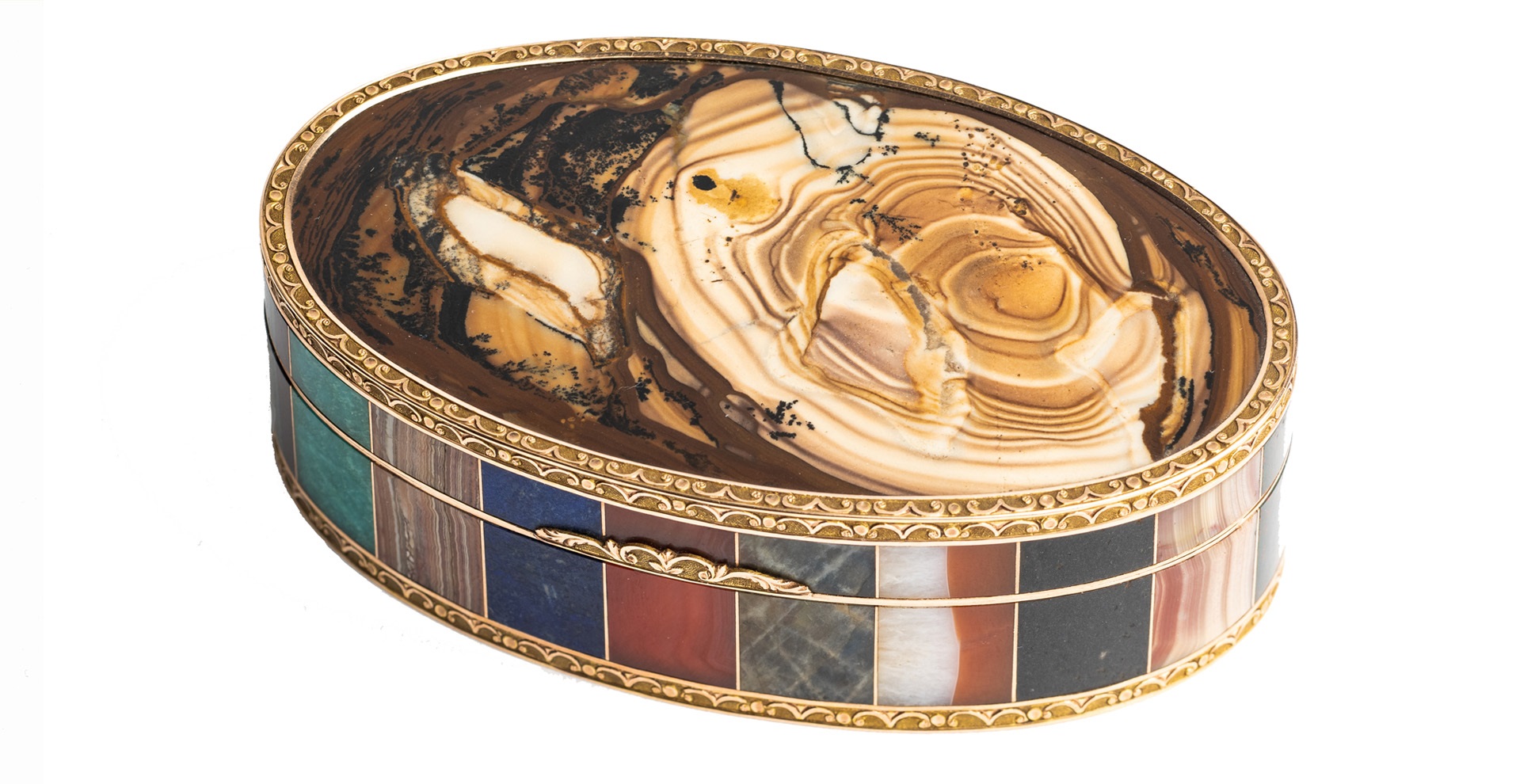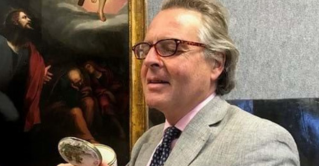Objects of Vertu

The intriguing term Objects of Vertu refers to the eclectic range of objects including snuff boxes, gold boxes, scent bottles, enamels, fans, small silverwork, intaglio and cameos that came to be collected by ‘connoisseurs’ from the 17th century onwards. All the different fields of art are represented - but in miniature.
Our Olympia Auctions experts have been advancing scholarship in this field for more than 40 years. If you have a collection to sell or want to have confidence in what you buy, they would be delighted to hear from you.
What are Objects of Vertu?
It is hard to pin down exactly what constitutes an Object of Vertu. It can be anything precious, gold, jewelled (but not jewellery), or enamelled, snuff boxes made in Paris in the mid 18th century or Turkish zarfs, jewelled, gold cage-work holders for porcelain coffee cups for example. But the term also covers things made precious not by their materials but by virtue of their exquisite workmanship or charm, like a carved wood snuff box in the form of a shoe or a mother-of-pearl etui (sewing case) disguised as a butterfly.
A finer world of collecting
The term originates in the 17th century, being related to a “gentleman of vertu”, a person with manners, knowledge, education and taste who demonstrated these attributes through his collecting of curiosities, often for display in a vitrine or a cabinet of curiosities.
“So-called cabinets of curiosities were a feature in certain late 16th/17th century houses belonging to wealthy and well-educated collectors. Over time, with the changes in fashion, these ‘connoisseurs’ began to collect snuff boxes and the rest of what became known as Objects of Vertu. Horace Walpole (1717-1797) was one such collector and Objects of Vertu were among the contents of Strawberry Hill, his Twickenham house (dismissed by a contemporary as a ‘Gothic mousetrap’), sold by auction in 1842. Today, Objects of Vertu, still offers a window into a finer world of collecting.” John Culme, Olympia Auctions’ consultant
Browse our biannual sales
Our sales include items dating from the late 17th century right up to the 1970s and 1980s when firms like Asprey’s and Garrard’s were making highly decorated small objects for a new generation of Middle Eastern buyers coming to London. Some collectors have eclectic tastes and enjoy the variety in our sales, others stick rigidly to just one category like Bilston, Battersea or Staffordshire enamels – quintessentially English.
Sell Objects of Vertu at Olympia Auctions
Our experts have been researching, identifying and cataloguing objects of vertu since the 1960s. They have a deep understanding of the significance of each object, its context and its maker (if signed), and will use their expertise to add value to whatever you care to show us.
“In the 1970s my colleague Julia Clarke and I realised that the mounts on Viennese neo-Renaissance enamels had makers’ marks. They were so small that no-one had ever noticed before. It opened up an entire new field of scholarship.
If you love beautiful things, collecting and studying Objects of Vertu is a voyage of discovery.” John Culme.
FREE VALUATIONS
Auction valuations are provided free of charge.
Find out more
ADVICE ON SELLING OR BUYING
Let our world-class specialists get you the best results. Contact the European Works of Art Department.
decorativearts@olympiaauctions.com
+44 (0)20 7806 5545
PAST AUCTIONS
See what we sell and prices fetched by looking at our past catalogues and videos.
CURRENT AUCTIONS
View our forthcoming auctions.














